
Batman has a long and varied history spread out across multiple different mediums and universes. There has never been just one Batman per se, even within the continuity of DC. He’s been rebooted, (both in and out of universe) killed off, replaced with alternate counterparts, as well as his children and even in one instance his deceased father.
Across his many iterations, the Batman has been everything from a gritty crime fighter, to a gothic anti hero, to a sci fi superhero, to a loving father.
Both in universe and from a real world perspective the history of the Caped Crusader is a fascinating and somewhat tragic story. Whilst the modern image of Batman may be one of the most beloved fictional characters, that image was the work of many great artists and writers over the course of several decades, many of whom’s contributions have sadly been overlooked.
Creation and Controversy
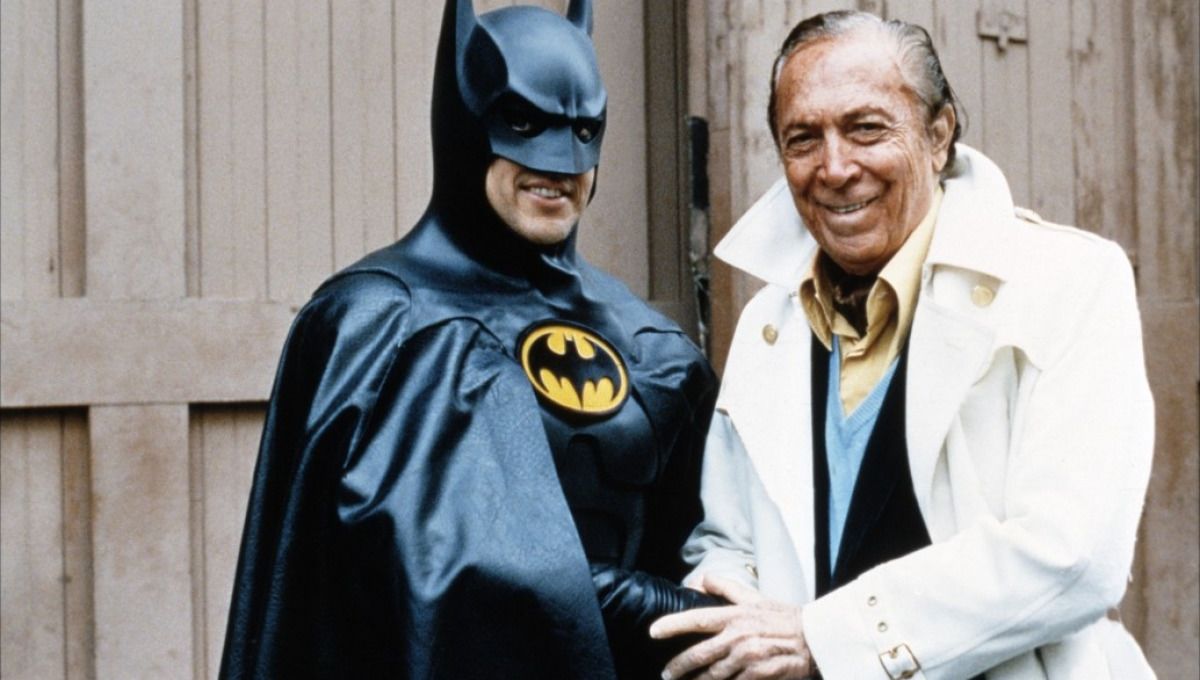
Bob Kane with Bill Fingers Batman.
For decades the official story about Batman’s origins was that he was created by cartoonist Bob Kane in 1939 for National Comics (later known as DC.) Kane was the only person ever to be credited on any form of Batman media for the first 70 or so years of the characters history. In the majority of interviews throughout his life, Kane would only ever credit himself with creating Batman and his supporting characters and enemies like the Joker and Catwoman.
In recent decades however it has been revealed that writer Bill Finger contributed far more to the Batman character and mythos than Kane ever did.
Kane came up with the name Batman, but his initial sketch bore little resemblance to the Batman we know today. Kane’s Batman had no cape, a dominos mask and dressed in red.
See here.
It was Bill Finger who not only came up with the Caped Crusaders look, but much of his character too. Finger suggested that Kane give Batman a cowl with bat ears, that he change the wings to a cape, and that he make Batman’s eyes white to suggest an air of mystery. He also suggested giving the Batman a grey and black colour scheme too.
Finger also came up with Gotham city, Commisioner Gordon, Alfred Pennyworth and the Batman’s civilian identity of the billionaire playboy Bruce Wayne. (He apparently named Bruce Wayne after the famous Scottish king Robert the Bruce.) Finger also came up with Batman’s tragic origins of being motivated to fight crime by the death of his parents.
Finger also created, or co-created most of Batman’s famous enemies including the Joker, Catwoman, the Riddler, the Scarecrow and the Penguin. Other artists and writers also contributed to the creation of many of Batman’s iconic rogues and supporting characters too, such as Jerry Robinson, Dick Sprang and Gardner Fox.
In all fairness to Kane back in the 40s the standard policy was for one person’s name to be stamped on the cover. The likes of Finger and Robinson were also hired as ghost artists and writers too. It wouldn’t be until the 60s when Marvel pioneered crediting all involved in the comic, with the famous Marvel bull pen.
Disputes over who created an iconic character are also common in the comic book and television mediums, where unlike a novel several people are always involved in a characters creation.
Stan Lee though pioneering the bull pen method, still always argued that he was the sole creator of the likes of Spider-Man, the X-Men and the Fantastic Four, as he came up with the initial concepts for all characters.
The difference between Lee and Kane however, was that Lee always credited the likes of Jack Kirby and Steve Ditko with designing the characters, and always said that the characters would not have been successful without the artists contributions. Lee was also always happy for his artists to refer to themselves as co-creators too.
Kane however not only took credit for things we now know he didn’t do, like Batman’s final design, but he also tried to silence Bill Fingers claims to helping create the Batman.
In the 1960s when Bill Finger mentioned his contributions to the Batman character at one of the first comic conventions, Bob Kane was quick to discredit him in a Batman fan magazine.
See here.
Now, Biljo, I’d like to emphatically set the record straight, once and for all, about the many “myths” and “conjectures” that I read about myself and my creation, “Batman,” in your “Fanzine” and other publications. I can only call all the stories I read about myself “conjectures,” because most of them are written without my advice or consent, and, therefore, cannot be entirely the truth, because how can an article about me or the Batman be the true story, when I am not consulted or interviewed?
Here, for the first time, straight from the “horse’s mouth” is the real inside story about myself and “Batman,” with no holds barred, and I intend to explode the myths about myself and get down to the real truth about the legend that is “Batman,” so, fasten your seat belts, Batmanians, as the fireworks begin.
We can call this story, “Inside Bob Kane,” or will the real creator of “Batman” sign in, please!
The Myth: Bob Kane is not the sole creator of “Batman.” (I’ve heard this a thousand times in my lifetime), that “Batman” was really created by Bill Finger, Jerry Robinson, Carmine Infantino, Jack Schiff, Julie Schwartz, my publisher, etc., etc., and my housekeeper!
The Truth: All hogwash! I, Bob Kane, am the sole creator of “Batman.” I created “Batman” in 1939, and it appeared, if memory serves me correctly, in Detective Comics as a six or eight page story, and I signed the first strip, “Robert Kane.”
I read your article that you sent to me, “If the Truth be Known,” ”A Finger in Every Plot,” and it seemed to me that Bill Finger has given out the impression that he and not myself created the ”Batman”, as well as Robin and all the other leading villains and characters. This statement is fraudulent and entirely untrue. That is ”myth” and I quote an excerpt from the article written by Jerry G. Bails, “The Cowl and Cape, the utility belt and gauntlets were all Bill’s contribution.”
Also, further down in the article and again I quote , “Bill also created Robin, of course, but also Commissioner Gordon, (who appeared in the first Batman story), Alfred the Penguin, The Catwoman, etc., etc.
I challenge Bill to repeat those statements in front of me. I am sorry that I was absent from the comicdom’s convention so that I could have answered him. The truth is that Bill Finger is taking credit for much more than he deserves, and I refute much of his statements here in print The fact is that I conceived the ”Batman`’ figure and costume entirely by myself’ even before I called Bill in to help me write the “Batman.” I created the title, masthead, the format and concept, as well as the Batman figure and costume. Robin, the boy wonder, was also my idea, . . . not Bill’s.
The only proof I need to back my statement is that if Bill co-authored and conceived the idea, either with me or before me, then he would most certainly have a by-line on the strip along with my name, the same as Siegel and Schuster had as creators of Superman. However, it remains obvious that my name appears on the strip alone, proving that I created the idea first and then called Bill in later, after my publisher okayed my original creation.
Now, Biljo, in all fairness to Bill, I will admit he was influential in aiding me in shaping up the strip, and there are certain characters Bill created, aside from my main characters’ and many other characters that I created, including the Batmobile. It’s been 25 years now, and truthfully, time sometimes blurs the memory and it is difficult to separate, at times, the myth from the truth, so that I cannot blame Bill too much if at times his memory “clouds.”
Aside to Jerry G. Bails: I ought to sue you for misrepresentation and distortion of the truth about your “Finger Article” that blatantly intimates that Bill Finger was the true creator behind Batman, and not Bob Kane. Your article is completely misleading, loaded with untruths fed to you by Finger’s hallucinations of grandeur.
May I say to you, Mr . Bails, that before you wrote so smugly and assuredly about Bill Finger being the real creator and ”tour de force” behind the Batman for publication, don’t you think that you should have double-checked your information back to me, so that I could verify and clarify Bill Finger’s comments? After all, I was involved with the Batman, don’t you think? But, of course, you minimized my part in the creation and maximized Bill Finger’s part, only because you listened to one side of the story – Finger’ s side. I am sure that you have heard that there are “two sides to every story”? At any rate, now you’ve heard my side. Are you still convinced about Finger’s immortality?
I am sick and tired of opinionated people, like yourself, who throughout the years have written distorted and untrue stories about how Batman was created and by whom, receiving their information from unreliable sources, when it would have been much easier to get the true story simply by contacting me, the one and only creator of Batman, that could be proven so easily by merely asking my publisher or simply by looking at the lone by-line of “Bob Kane” on the strip.
I’d also like to state here, Mr. Bails, that although Bill Finger literally typed the scripts in the early days, that he wrote the scripts from ideas that we mutually collaborated on and that many of the unique concepts and story twists also came from my own fertile imagination and that I was not just a puppet cartoonist alone, following a writer’s script and contributing nothing more than the art work.
Finger never received the credit he was due during his lifetime as a result, and died in both obscurity and poverty in the 1970s. Contrary to popular belief he was not buried in an unmarked potters grave. He was cremated, with his only son Fred Finger scattering his ashes in the shape of a Bat on a beach in Oregon, as per his wishes.
Bob Kane would later express regret for the way he had treated Bill Finger. In 1989 after the release of the first Batman film starring Michael Keaton, Kane said.
In those days it was one artist and he had his name over it [the comic strip] — the policy of DC in the comic books was, if you can’t write it, obtain other writers, but their names would never appear on the comic book in the finished version. So Bill never asked me for it [the byline] and I never volunteered — I guess my ego at that time. And I felt badly, really, when he [Finger] died
Now that my long-time friend and collaborator is gone, I must admit that Bill never received the fame and recognition he deserved. He was an unsung hero … I often tell my wife, if I could go back fifteen years, before he died, I would like to say. ‘I’ll put your name on it now. You deserve it.
However many saw this as too little, too late, and argued that Kane was only recounting now that Finger had passed away and could not recieve any royalties. It would not be until 2015, following a campaign by author Marc Tyler Nobleman and Fingers grand daughter Athena, that Finger would be officially credited as the co-creator of Batman, beginning with the film Batman vs Superman and the television series Gotham.
Kane’s reputation has naturally dropped considerably as a result. Many others in the industry have come forward with less than favourable stories about Bob Kane in recent years, with arguably the most infamous being comic book author Jim Steranko’s near physical confrontation with Kane, who Steranko derided as both a coward, and back stabber who took advantage of Finger.
Its ironic in a way, as now I feel that people perhaps don’t give Kane the credit he deserves.
Kane did play a vital role in the creation of Batman and various other important characters in the Batman canon. One thing people often overlook about Kane’s initial drawing of Batman is that even there, the character lacks superpowers. Kane’s Batman couldn’t fly like Superman. He had artificial wings instead which he had designed to help him fly.
This would ultimately prove to be a vital component in Batman’s character, that he has to rely on gadgets rather than super powers and it was there in Kane’s initial concept.
Bob Kane also did play a role in the creation of the Joker, Catwoman, the Scarecrow and the Penguin too. Jerry Robinson, who spoke very unfavourably of Kane’s treatment of Bill Finger, (going as far as to say he never forgave him for it) nevertheless said that Kane can be considered a co-creator of the Joker. It is also known that Kane played a key role in fleshing out the Catwoman’s character. He apparently based much of Catwoman’s personality on his cousin Ruth Steel.
The real Catwoman.
Kane also created the final design for the Penguin and was the sole creator of Two Face, one of Batman’s most iconic foes. Finally it was also Kane who personally assembled the original team of artists and writers on the Batman comics, Bill Finger and Jerry Robinson.
Had Kane not been so desperate to hoover up all the credit, he would be revered as the man who helped kick off, and flesh out the Batman mythos. The lesson here is to never try and take too much credit or else when the truth comes out, people will be loathe to give you any credit at all, as seen with Kane.
Whilst its tragic that Finger was never given the credit he was due, at the very least his reputation among fans and critics is considerably stronger today than Kane’s.
The Early Years

Batman first appeared in Detective Comics 27. In his first few appearances Batman was depicted as being willing to murder his enemies and use guns. It was also a policy of earlier comics to make sure that none of Batman’s enemies would recur, so as not to undermine his status as a hero. Despite this however there were two recurring enemies in Batman’s earliest days with Detective Comics, The Mad Monk, a hypnotic Vampire, and Doctor Death, a mad scientist. Death’s origins of having his face scarred in an accident and developing a grudge against Batman as a result, would later be reused for the Joker.
Whilst Bruce Wayne was best friends with Commissioner James Gordon in the earlier stories, the police still viewed Batman as a dangerous psychopath who needed to be put down. Bruce Wayne also had a fiance too in the early years, Julie Madison, who has been seldom seen in most adaptations.
Whilst featuring many larger than life concepts from death rays, to robot Dinosaurs to Vampires, the earliest Batman comics still took the stories and character very seriously, and were very dark in tone.
During Batman’s first year with Detective Comics, several key elements of the Batman mythos would be established, such as the characters tragic origins in Detective Comics 33, his utility belt in issue 29, and his famous Batarang as well as the first ever Bat themed vehicle, the Bat plane in issue 31.
Finally in Detective Comics 38, Batman’s sidekick Robin was introduced. Created by Jerry Robinson, Robin, whose real name was Dick Grayson, was a young boy whose parents had been murdered just like Batman. Robin’s popularity would lead to a surge in similar kid sidekicks. Robin has remained a somewhat controversial figure in the decades since, with many feeling that he made Batman too light a character. Robin has nevertheless remained one of the most enduring icons of the Batman mythos.
Batman proved to be such a big hit that he would soon get his own series, whilst continuing to star in Detective Comics. The first ever solo issue of Batman saw the character face both the Joker and the Catwoman (then just referred to as simply the Cat.)
The Joker in his first appearance was depicted as a true monster clown, murdering his victims in gruesome ways simply because he thought it was funny. His origins were shrouded in complete mystery. Whilst more details have been revealed about the Jokers past in the ensuing decades, to this day the villains identity and real name have never been revealed.
From the start the Joker was depicted as Batman’s most dangerous and evil adversary, being ten steps ahead of the Batman and the police, and in a stark contrast to his later appearances; he was even depicted as being able to best the Caped Crusader in a fight.
Catwoman, whose real name was Selina Kyle, meanwhile was depicted initially as more of a manipulative villain who was no match for the Batman physically, and was far more unsympathetic than later depictions. From the start however the two were shown to have a romantic interest in one another, though this would become more prominent after Julie Madison was written out.
The Penguin meanwhile would be introduced in 1942. Though initially a more comical villain than the Joke, The Penguin would go on to be one of Batman’s most recognisable and recurring foes. Over the decades the Penguin’s character would be fleshed out more, and he would go from a campy supervillain obsessed with birds, to a gritty and brutal crime lord.
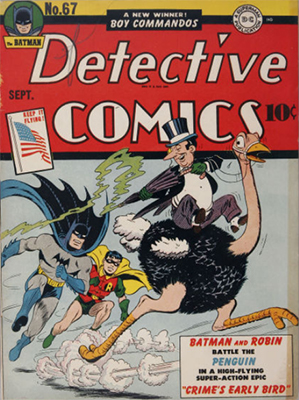


The first appearances of the Penguin and the Catwoman, two of Batman’s main enemies. The papa spank line isn’t one of the Caped Crusaders finest moments.
Another major enemy of Batman introduced during the early years was Doctor Hugo Strange. Originally intended to be Batman’s archenemy, Strange was more of a match for Batman in terms of intellect than his other enemies, being a genius scientist in his own right. Ultimately however the more colourful Joker, Penguin and Catwoman would soon eclipse Strange, though Strange would continue to recur over the decades, and has even appeared in many adaptations such as the recent tv series Gotham.
The Joker was originally to have been killed off in his second appearance, but a last minute decision by editor Whitney Ellisworth ultimately spared the character, and the Joker would quickly cement himself as Batman’s arch foe, appearing in 6 out of the first 9 Batman issues.



The first appearance of what would quickly become Batman’s greatest enemy, the Joker.
Ellsworth would also make another major contribution to Batman’s character, deciding after an issue of Detective Comics which featured the caped crusader murdering mutated giants with a machine gun, that Batman would never use a gun or kill his enemies again.
This has gone on to be a vital aspect of Batman’s character ever since, not just in the comics, but in most other adaptations too. In universe the reason Batman hates guns it would be established is obviously because they were used in the brutal murder of his parents. Some versions of Batman however, such as Michael Keaton’s in the first two Burton Batman movies have returned to using weapons and lethal force, but generally speaking, most versions of Batman have stuck to Ellsworth’s policy.
In addition to starring in his own series and Detective Comics, Batman would go on to appear regularly in World’s Finest in 1940, a series which featured stories starring both Batman and Superman, DC’s other most popular character. It would not be until 1952 however that World’s Finest would bring both characters together in the same story. Batman and Superman would quickly be established as being best friends, and would remain so until the modern age, when the darker Batman’s methods often clashed with Superman.
Batman would also be established as an honorary member of the first ever superhero team, The Justice Society of America early into his career. First appearing in All Star Comics 3 in 1941, Batman and Superman however unlike with the later Justice League were not allowed to appear in with the Justice Society in a regular basis, as they already had their own titles, unlike most of the other members. Still one of the Justice Society’s base of operations was in Gotham City.
Batman would remain one of DC’s best selling characters throughout the 40s, though as the decade waned on, Batman would be made into a much lighter character, and more of a traditional father figure to Robin.
The End of the Original Batman

From an in universe perspective the original Batman’s adventures would come to an end in the 50s. DC would later establish in the early 60s, that all of their stories from the 1930s to the mid 50s took place in another universe to those from the mid 50s to the then present.
The original 30s-50s stories took place on Earth 2, whilst the then modern stories from the mid 50s-present took place on Earth 1.
DC did this to explain away the major continuity issues that had emerged over the decades, chiefly concerning the Justice League and the Justice Society, which had each featured their own version of the Flash, Jay Garrick and Barry Allen, whilst Batman, Superman and Wonder Woman had been members of both teams. (Barry and Jay had been established as the only versions of the Flash in their own titles leading to some confusion.)
The multiverse idea was introduced in the story Flash of Two Earth’s which saw Barry Allen, the modern Flash travel to Earth Two where he met Jay Garrick the original Flash (who had visibly aged since we last saw him.)
The meant however that the then current Batman of the 60s was not the same character as the original from the 30s-mid 50s. It was never made clear when the adventures of the original Batman had come to an end, and the adventures of the new Batman began, as the multiverse was a retcon, but it would later be established in universe that the Earth Two Batman had retired at some point in the 50s.
The original Earth Two Batman’s final fate would be revealed in the late 70s. At some point in the mid 50s, Batman married a reformed Catwoman, and the two soon had a daughter, Helena Wayne. Years later however Catwoman would be blackmailed into carrying out another crime, and Batman would inadvertantly cause her death.
The marriage of Batman and Catwoman.
Vowing to never don the cape and cowl again, Bruce was left a broken man by his wife’s death, but his daughter Helena Wayne would later become a masked crime fighter, The Huntress who would bring the criminal who had blackmailed her mother to justice.
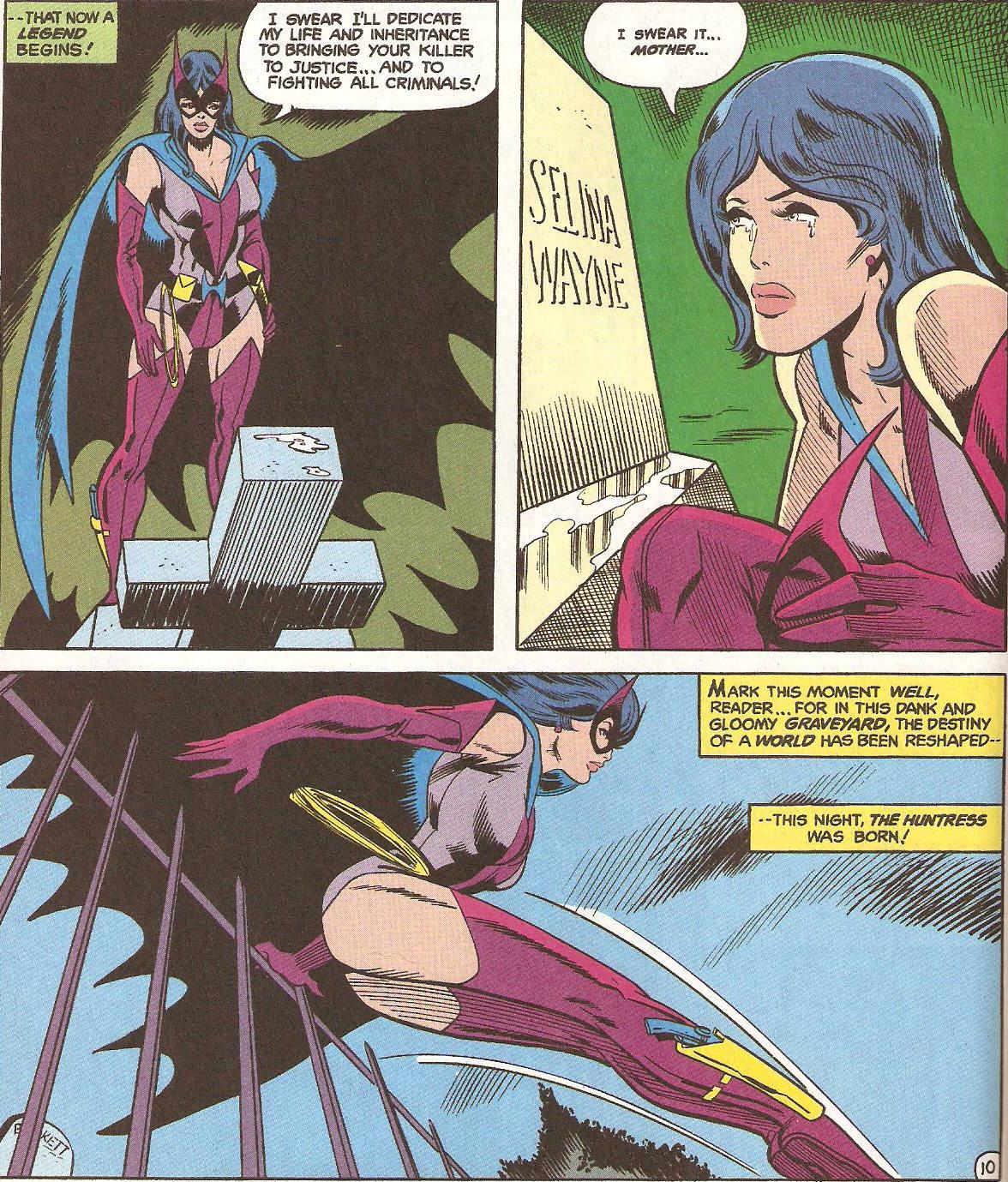
Helena Wayne vows to avenge her mothers death.
The Huntress would go on to become a popular character throughout the 70s, continuing her father’s legacy on Earth 2, joining the Justice Society, and later crossing over to Earth One where she’d work with its version of her father.
The Earth Two Bruce Wayne meanwhile despite his vow would later become Batman one last time to battle the Wizard, Frederick Faust which resulted in his death.
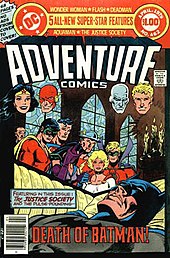
Following Batman’s death ironically the Joker would take it hardest of all. Furious that he had beaten his long time enemy, simply by outliving him, the Joker refused to believe Batman was gone and would go on a massive rampage to try and draw The Batman out. An older Dick Grayson would be forced to pretend to be Batman in order to convince the Joker that his foe was still alive. Happy that Batman was not dead, the Joker willingly surrendered, and continued to plot his final duel with the Batman that would ultimately never come.
This classic scene from Batman the animated series where the Joker (voiced by Mark Hamill) believes Batman has been killed and grieves, not over Batman, but simply of being deprived of his revenge; was inspired by the original Earth Two Joker’s reaction to his Batman’s death.
Whilst some critics felt the multiverse format was needlessly complicated, personally I think that it was a brilliant formula that ultimately allowed DC to finish their characters stories, whilst not having to stop producing Batman stories altogether. In contrast Marvel, whose characters all live in one floating timeline’s stories can never end, or even develop in any meaningful way that upsets the status quo. Take a look at Peter Parker and Mary Jane’s wedding for instance that had to be retconned in the most ridiculous way, to restore Spidey to being single. The original Batman and Catwoman’s marriage meanwhile remained final and even produced another superhero, the Huntress.
Personally I enjoy reading the earliest Batman comics knowing that he and Catwoman one day end up getting married, and that their legacy continues on through the Huntress, who is one of my favourite heroes.
Ultimately whatever your opinion on the multiverse, its important to remember that your Batman is NOT your grandfathers Batman. The Batman we read about in any story from his introduction to the mid 50s died decades ago, and has been replaced since by three alternate universe counterparts.
50s: Sci Fi Hijinks

From a real world perspective the 50s would mark a radical change in Batman’s character. Batman had been completely watered down by this stage from his darker past into being a totally family friendly hero, but as the decade rolled on the character would be turned into more of a sci fi hero. The 50s would see Batman regularly travel to other worlds, travel through time, battle aliens, giant robots, and other atomic age monsters and strange creatures.
Sci Fi had been a vital component in Batman’s character from the very beginning. His gadgets and Batcave were often presented as being far in advance of contemporary technology. (One of the most famous and longstanding trophies in the Batcave is a gigantic robot Tyrannosaurus Rex.)
Added to that many of Batman’s most iconic enemies such as Doctor Hugo Strange were firmly rooted in sci fi too. The 50s however ultimately took it too far and had Batman spend more time in outerspace, or the future or on other worlds, than in Gotham.

As a result the 50s is often seen as a low point in the characters history. Nevertheless there would be a few important developments during this decade. The Jokers origins would be finally be revealed in the story The Man Behind The Red Hood.
Originally the Joker had been a criminal known as the Red Hood who planned to steal a million pounds and then retire, but during his final robbery of the Monarch Card company, Batman accidentally knocked the Red Hood into a vat of chemicals, which bleached his skin chalk white, dyed his hair green and distorted his mouth into a permanent hideous grin, driving him insane in the process
Whilst presented as a light hearted story at the time, this development ended up having major repurcussions on the Batman/Joker dynamic. Now Batman was made responsible for creating the Joker, and was therefore accountable for all of his crimes. By this stage however the Joker had been turned into more of a harmless prankster, carrying out wild, over the top schemes, but rarely ever killing anyone. It would not be until the 70s, when the Joker was restored to his old murderous persona that writers would explore the ramifications of Batman’s role in the Joker’s origin, as well as his role in the creation of his other major villains too.
/cdn.vox-cdn.com/uploads/chorus_asset/file/16006827/Man_Behind_the_Red_Hood.jpg)
The 1950s also saw the introduction fo Mr Freeze, then referred to as Mr Zero. Freeze would go on to be one of Batman’s most famous foes in popular culture, thanks to his appearances in the 60s Adam West series and the 90s Batman the Animated series.
Justice League of America

In 1960 Batman, along with Superman, Wonder Woman, The Flash (Barry Allen), Green Lantern (Hal Jordan) and Aquaman would form one of the first superhero teams, The Justice League in The Brave and the Bold issue 28.
Initially however Batman and Superman would be relegated to more minor roles in the strip with DC not wanting to overexpose their two most famous characters, though the two heroes did still go on several adventures with the league, and even played key roles in saving the day in some of the earlier strips. Eventually Batman and Superman would be allowed to play more major roles in the Justice League.
Batman despite having no superpowers of his own, would still be able to keep up with his allies in the league through his gadgets and fighting skills. (Batman had already been shown to tackle super powered and paranormal threats on his own, such as Manbat, and Mr Freeze.)
Batman would often end up being the key to many of the Justice League’s success’ as his scientific genius would enable him to disarm the villains weapons, or rewire their technology in a way that the other heroes couldn’t, whilst his deduction skills would often allow him to figure out the villains weaknesses, hideouts, or their plans when the other members of the League could not.
An example of Batman’s usefulness to the rest of the League despite his lack of powers.
In spite of this Batman’s history with the league has not always been smooth. In the 2000 miniseries, Towel of Bable, Batman’s archenemy, Ra’s Al Ghul steals files Batman as gathered on the rest of the League in case they ever went rogue and uses them to very nearly kill the League.
Though Ra’s plan is stopped, Batman is forced to leave the League afterwards, with Wonder Woman, Plastique Man and Aquaman being unable to trust Batman afterwards.
Batman has often clashed with other members of the League due to his secretive and somewhat paranoid personality. Still he has nevertheless always remained a prominent member of the team, and in many versions has even helped found the League.
The Bat-Family

Towards the end of the 50s and the early 60s, two more sidekicks would be introduced for the Caped Crusader. Kathy Kane aka Batwoman, and her niece Bette Kane who became the first ever Batgirl. Both were introduced as love interests of Batman and Robin respectively. In addition to this Batman would also inherit a trusty hound known as Ace during this period, and another sidekick in the form of Batmite.
Batmite was an imp from the 5th dimension, similar to Superman foe Mr Mxylptzlik, though Batmite in contrast was shown to idolise Batman and would frequently help him out.


By the mid 60s the Bat family would be phased out, with editors feeling that there were too many characters detracting from Batman. Kathy Kane would nevertheless be revived many decades later as Kate Kane, whilst the concept of Batgirl would similarly be revived towards the end of the 60s.
Many critics and comic historians have argued that Batwoman and Batgirl were introduced simply to offset complaints that Batman and Robin were gay lovers. Ironically the later version of Kate Kane would be depicted as one of the first openly lesbian heroes in comics.
The Silly Years
Batman’s sales declined rapidly throughout the 60s to the point were there was talk of cancellation. Ultimately however the character would reach new heights of popularity during the later half of the decade thanks to the live action Batman television series starring Adam West.
Premiering in 1966, Batman was a comedy series that spoofed the characters. Though undoubtedly one of the greatest comedy series of all time, the show did change the pubic perception of Batman to being a campy, silly character which made it difficult for later more serious film pitch’s for the Dark Knight to be taken seriously.
Still overall the 60s show had a positive impact on the franchise. Bob Kane himself credited the show with saving the comic, with the 66 Batman helping to kick off a craze that would become known as Batmania. The 60s show would also elevate the characters of the Riddler and Mr Freeze into being among Batman’s most iconic enemies. Prior to the 60s serise Mr Freeze had appeared just once, whilst The Riddler had made only a handful of appearances.
The 60s series would also be responsible for the creation of the second Batgirl. This version of the character named Barbara Gordon was the daughter of Commissioner Gordon, and generally worked on her own. The new Batgirl proved to be very popular with readers and would go on to become one of the most successful female heroes for DC comics.
In order to emulate the success of the 60s show, the Batman comics would start to adopt a campier, more light hearted tone, but after the show came to an end attempts would be made by writer Dennis O’Neil and artist Neal Adams to take Batman back to his darker roots.


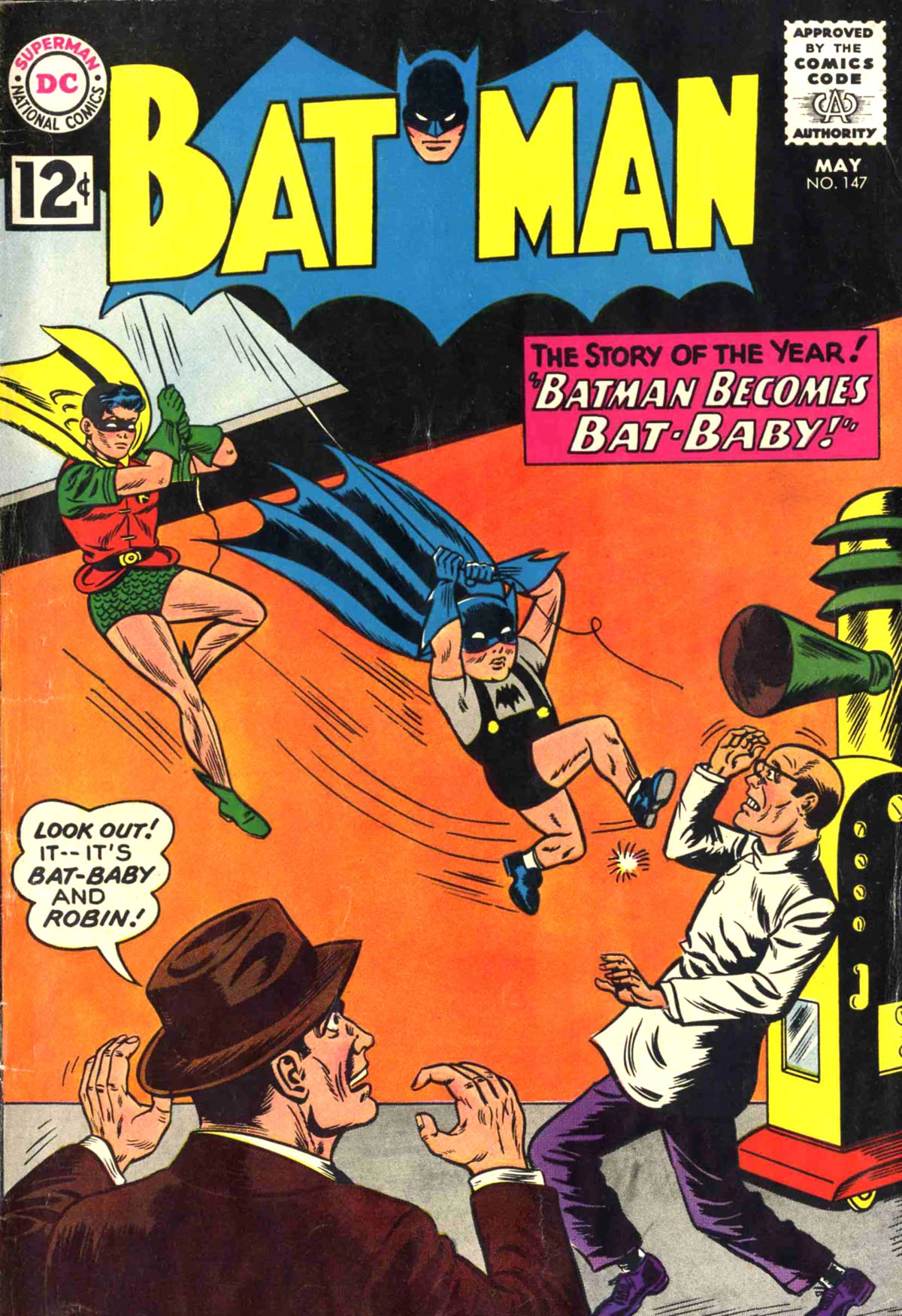
Classic examples of campier Batman stories of the 60s.
The Night of the Stalker
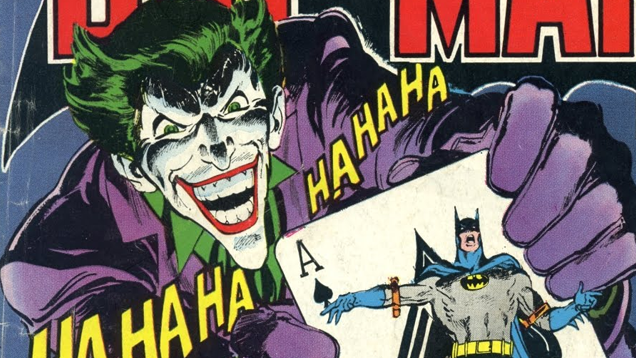
Throughout the 70s Batman would be depicted as a much darker character. Now operating alone, with Robin having since grown up and established himself as a hero in his own right. The Batman of the 70s still retained many of the lighter elements that had been developed in the decades since his introduction. The 70s Batman still had a sense of humour, was friendly to those closest to him, and genuinely enjoyed his life.
Still the stories took themselves more seriously than ever before, and explored much darker content.
A classic example of the more mature and sophisticated stories of the 70s, can be seen in the strip “The Night of the Stalker.” Here Batman witnesses the murder a couple in front of their child by common criminals who he then pursues through the woods of Gotham. Batman is absolutely vicious in dispatching the criminals, as he is forced to relive the horror of his parents death yet again. Night of the Stalker was widely praised by fans and critics alike for its depiction of Batman as a dark, ruthless anti hero, whilst at the same time touching on the tragic elements of his character in a moving way.
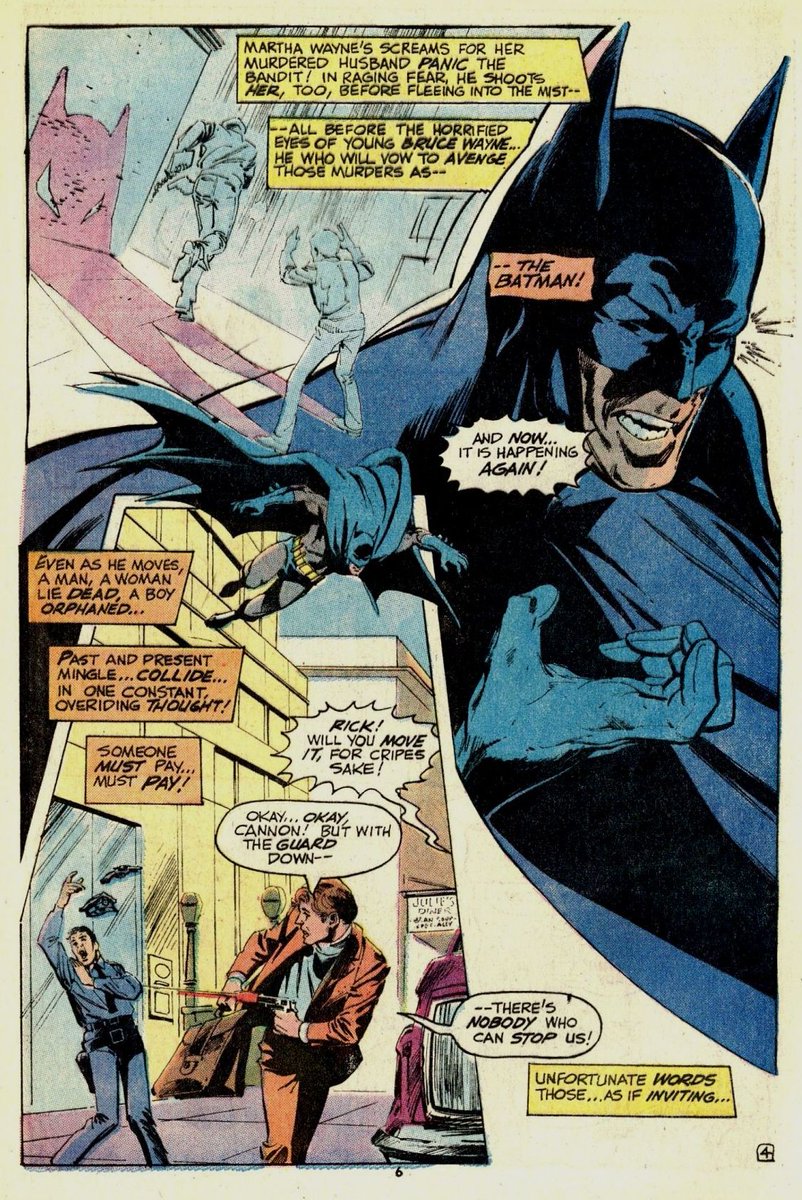

Batman’s enemies would similarly be given a makeover during this era. The Joker having been portrayed as a silly prankster throughout the last two decades, would be returned to being a vicious, sadistic, mass murderer in O’Neil’s “Joker’s 5 Way Revenge”. This story saw the villain murder his former henchmen in gruesome ways, with Batman only managing to rescue the last, who the Joker attempts to feed to a shark!
This version of the Joker however was different to the original in that he was still comical, and his plans still more outlandish, but the humour was instead very dark. Unlike later depictions of the Clown Prince of Crime, the 70s, early 80s Joker also still despised the Batman and genuinely wished to kill him. Later versions of the Joker would instead enjoy fighting with Batman, viewing him as the straight man in their double act. The 70s Joker however had a more traditional hero/villain relationship with Batman.




![]()
Classic examples of the Jokers sick sense of humour from the 70s-early 80s.
The 70s would also see the introduction of the only villain to ever challenge the Jokers claim as Batman’s archfoe. Ra’s Al Ghul. Ghul was a warlord who had been kept young for several hundred years, through the Lazarus pits.
Leader of the league of assassins, Ghul had countless resources all over the world to use against the Batman. He was also Batman’s equal in terms of intellect and physical prowess, and was able to deduce Batman’s secret identity when he first met him. Ghul initially saw Batman as his heir to the position of the Demon’s head, but the two would soon come into conflict which would be made all the more personal by Batman’s feelings for Ghul’s daughter, Talia.
The 70s would also see Batman work with many other DC heroes to a far greater extent than ever before through The Brave and the Bold which saw Batman work with a different DC hero every issue.
The Brave and the Bold was originally conceived as an anthology series, before becoming a team up series.
From issue 50 however The Brave and the Bold came to revolve entirely around Batman working with a different hero each week. This decision was made to cash in on the popularity of the Batman series, but the strip would remain a Batman team up series, even after the show had been cancelled. Throughout the 70s The Brave and the Bold would become the most popular Batman title.


The series helped to put Batman into more fantastical and outlandish settings, but unlike in the 50’s comics it didn’t stop the Batman from going on more traditional crime stories in the main title. The Brave and the Bold also helped to examine Batman’s greater role in the DC universe and flesh out his relationships with other DC characters to a far greater extent than ever before. We got to see Batman’s strange friendship with Deadman, his partnership with Wild Cat (which unlike with Robin was on a more equal footing) and his rivalry with Green Arrow. One strip even saw the Caped Crusader trapped in a love triangle with Wonder Woman and Batgirl!
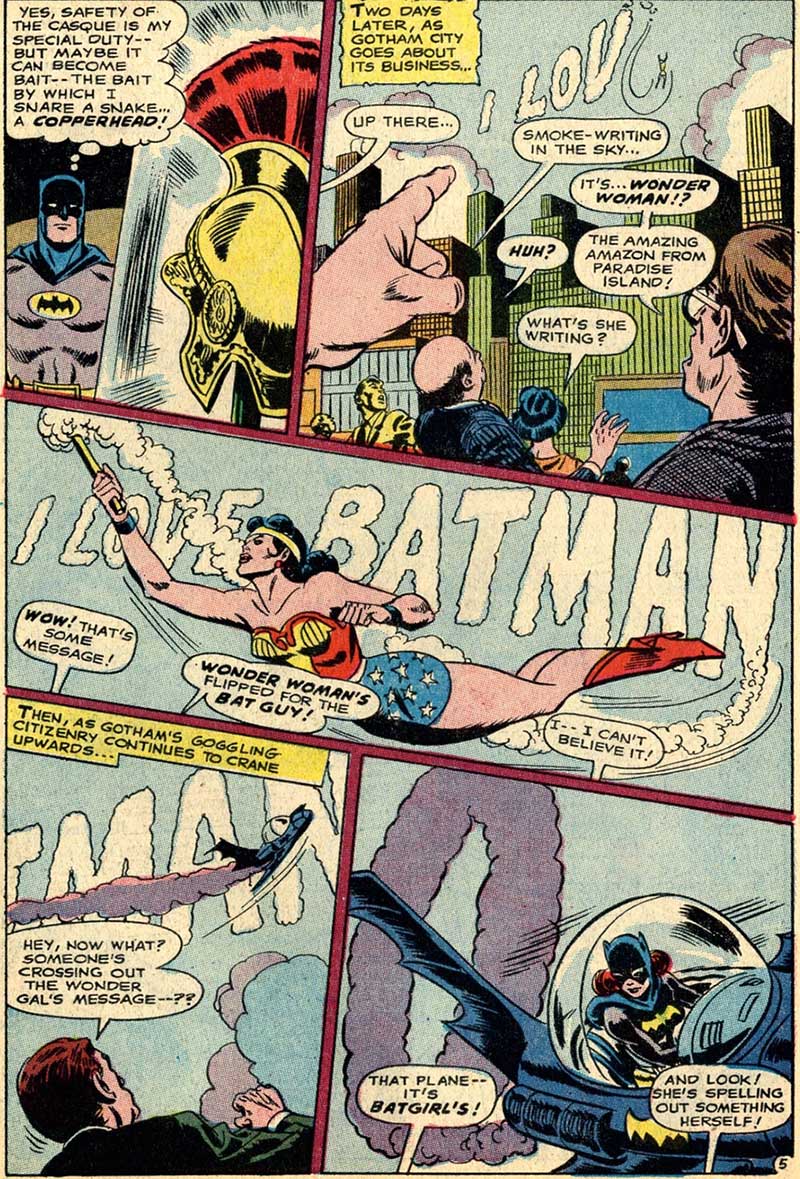

One of the most ridiculous stories ever written.
For me the late 60s to the early 80s represents the best period of Batman’s history. There is a much wider variety of stories during that decade than any other. The silly, light hearted approach is not entirely jettisoned as seen above, but at the same time there are darker, more serious stories such as Night of the Stalker. The 70s still saw Batman battle ordinary criminals in his own series, yet through the Brave and the Bold it saw the character go on sci fi and fantasy adventures too. The 70s also featured more Batman team ups than any other decade. Brave and the Bold would come to an end in 1982, and when it was revived in 2007 it would be restored to a team up series, rather than a Batman comic.
Batman in my opinion is a better fit for team ups than any other hero. His lack of powers means that he can be vulnerable to any other heroes enemies, whilst his gadgets and deduction skills enables him to be of use to even the most powerful super heroes too. In contrast Superman or Wonder Woman or even The Flash are all too powerful to help out a hero like say Wild Cat, as they’d deal with his problem in a matter of minutes. Its a shame that no other decade would make use of Batman’s adaptability in working with other heroes as well as the 70s did.
For me the 70s best shows off all of the different sides to Batman’s character and it has gone on to be widely praised as a golden age by many critics and comics historians. The 70s would go on to have a large influence on Batman the Animated Series in particular. Sadly however despite its popularity with fans, Batman sales would actually decline greatly throughout the 70s.
End of the Earth One Batman’s adventures
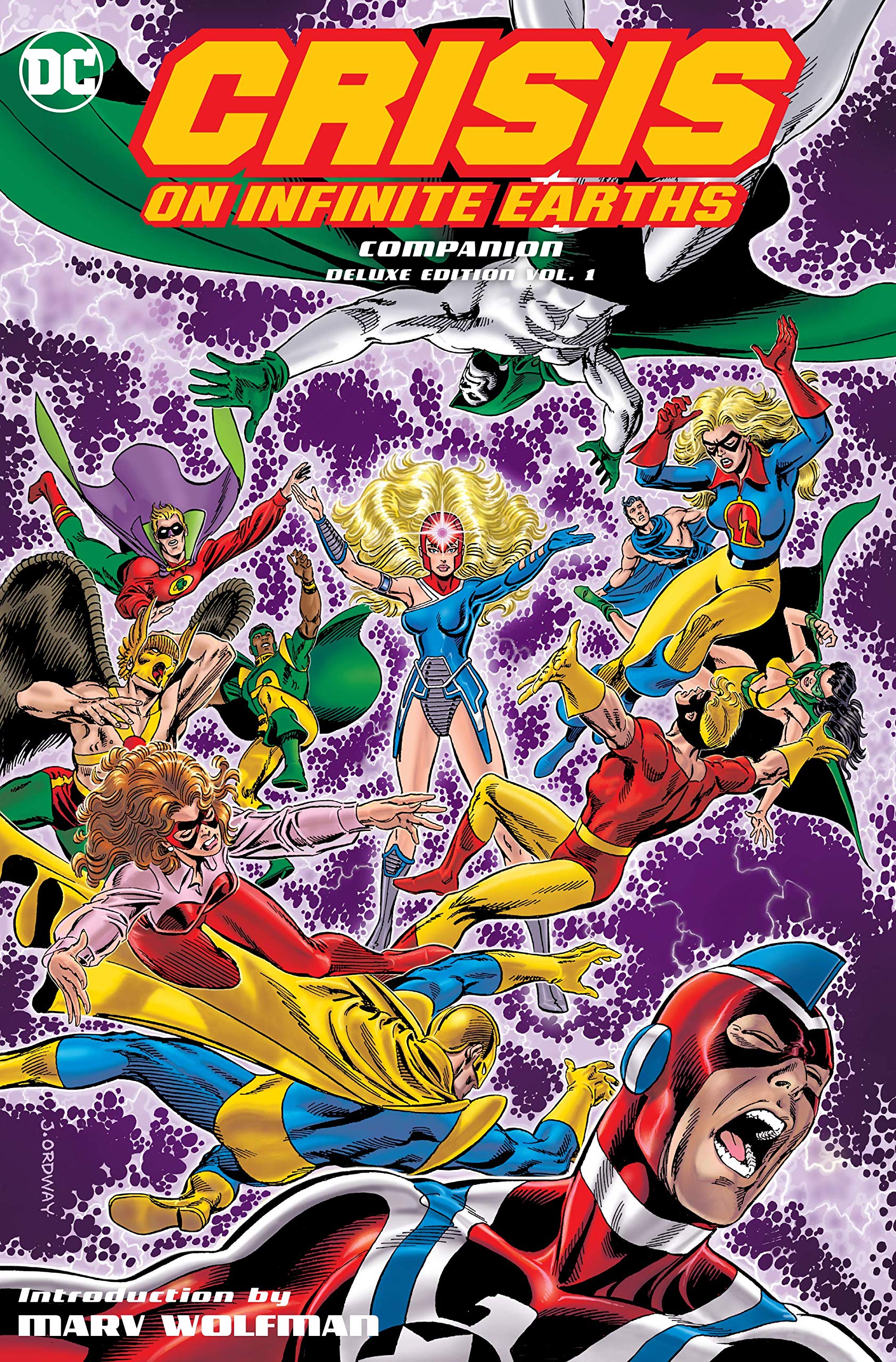
In 1985 DC would produce a multi crossover story called Crisis on Infinite Earth’s which saw a vastly powerful and evil cosmic entity known as the Anti Monitor destroy every universe, with only one universe, New Earth, created from the ruins of the last 5 universes surviving.
As a result of this the Earth One Batman’s adventures came to an end, and all main DC stories from 1985-2011 would take place on New Earth.
The Huntress, daughter of the Earth 2 Batman’s life would come to a tragic end too. Though she survived the erasure of her own world, she would later be murdered by minions of the Anti Monitor during a final stand against the Anti Monitor’s minions. The Huntress would die a heroesdeath saving some children from falling rubble. The Huntress was one of many heroes to die during the Crisis, alongside Barry Allen (who would be succeeded by Wally West) and Supergirl.
Crisis on Infinite Earth’s had been designed solely to wipe the Multiverse from canon. DC felt that the Multiverse, which had since expanded to include hundreds of earths aside from earth’s 1 and 2 was too overly complicated and in danger of putting new readers off. Therefore New Earth was designed to serve as a single timeline that readers could easily follow.
Ultimately the multiverse would be brought back gradually over the next few decades. The 2005 crossover Infinite Crisis saw one of the final survivors of the multiverse, a heroic alternate version of Lex Luthor, create 52 new universes, whilst a 2015 crossover event called Convergence erased the events of Crisis on Infinite Earth’s restoring the multiverse.
Still from 1985 to 2011, it would be the adventures of the Batman of New Earth that readers would follow.
The Dark Knight Returns

Batman sales declined in the early 80s, but the character would be given a major boost through a number of much darker, more violent works which fully helped to restore Batman’s reputation as an anti hero.
The first of these was Frank Millers mini series The Dark Knight Returns which depicted an aging and bitter Bruce Wayne come out of retirement. Set outside of the New Earth continuity, The Dark Knight Returns was most notable for featuring Batman and Superman clashing with one another, and its final brutal showdown between Batman and the Joker.
The Dark Knight Returns proved to be a massive success and finally helped Batman shake off the campy image from the Adam West series. The levels of violence in the story far exceeded those of previous Batman adventures. According to Frank Miller, Bob Kane himself hated the miniseries, feeling that it was too nasty. Still The Dark Knight Returns made an immeasurably huge impact on the industry, and similar darker Batman stories followed.
The 1988 graphic novel, The Killing Joke written by Alan Moore and with art by Brian Bolland, expanded on the Jokers origins, whilst taking the feud between the Clown Prince of Crime and the Dark Knight to a whole new level.
The Killing Joke reveals that the Joker was original a failed comedian, who attempted to rob the Ace chemicals plant to support his pregnant wife. On the night of the robbery however, the Jokers wife is killed in a freak accident. The criminals then force him into helping to carry out the robbery, during which the Joker falls into a vat of chemicals, finally pushing him over the edge.
In the present the Joker attempts to prove that one bad day can drive anyone to lunacy. He targets Commisoner Gordon and shoots his daughter Barbara through the spine and then tortures the Commisoner by showing him pictures of Barbara’s bleeding, naked body!
The Jokers origins and his heinous crimes against Jim and Barbara Gordon from the 2016 adaptation of The Killing Joke, starring Mark Hamil as the Joker.
Barbara Gordon who had earlier retired as Batgirl would be permanently crippled as a result. Originally Alan Moore had intended the Killing Joke to be a one off, outside of DC canon, but DC would incorporate it into the New Earth timeline nonetheless. Barbara Gordon would still continue to appear regularly however, as the character of Oracle, a computer expert and skilled hacker. Ironically as Oracle Barbara would go on to have greater significance than she ever did as Batgirl.
Later that same year the Joker would be responsible for another tragedy in Batman’s life in the mini series Death in the Family. Here the Joker murdered the second Robin, Jason Todd in cold blood. Todd had replaced Dick Grayson in 1983. Though popular at first, the character’s more aggressive personality quickly caused readers to turn on him, so much so that in the final panels of Death in the Family, readers were given a choice to vote on Robin’s death or survival, with readers ultimately choosing to kill him.

The Joker’s murder of Jason Todd, the Second Robin, as voted for by contemporary readers.
These stories, combined with the 1989 Batman movie, directed by Tim Burton and starring Michael Keaton as Batman, and Jack Nicholson as the Joker; helped to cement the darker portrayal of Batman in popular culture.
From this point on Batman would always be depicted as a darker, more violent, tortured anti hero, paranoid, untrustworthy and in some ways as disturbed as many of the villains he faces.
The Modern Age

Throughout the 90s Batman would continue to enjoy new levels of popularity. Burton’s Batman film had been a record breaking success and a bigger cultural phenomenon than even the 66 series. The character would go on to enjoy greater success in animation with the classic Batman the Animated Series which would kick off the entire DC Animated Universe. Much like the Burton movie, the DCAU would treated the source material seriously. The DCAU would also influence the comics themselves, just like the 66 Batman series.
The character of Harley Quinn, Jokers sidekick and lover who first appeared in Batman the Animated series would later be incorporated into the comic books, becoming one of Batman’s most recognisable enemies in popular culture. Another character from the DCAU who would later be incorporated into the comics would be Terry McGinness, the second Batman.
McGinness was introduced in the series Batman Beyond, which was set 50 years into the future. McGinness was originally a street hoodlum who would stumble upon the Batcave after Bruce Wayne helped save him from the Jokerz Gang. Terry would later steal the Bat suit to avenge his fathers murder, and though Bruce disapproved of his actions at first, Bruce would later take Terry on as his protege, training him to be the new Batman proper.
It would later be revealed that Terry McGiness was in fact Bruce Wayne’s biological son.
/cdn.vox-cdn.com/uploads/chorus_image/image/64759564/batman_beyond_139636_1_1200x676.0.jpg)
The second Batman, Terry McGiness. Despite his popularity, Terry would not be incorporated into the mainstream comics until 2014 with the new 52 crossover series.
In 1993 one of Batman’s most iconic enemies, Bane would be introduced in the Nightfall arc. Bane would be responsible for breaking the Dark Knights back. For the first time someone other than Bruce Wayne, Jean Paul Valley would be forced to don the suit until Bruce Wayne was able to recover.
Batman would continue to enjoy further acclaim with the No Man’s Land and Hush story arcs, both of which would go on to influence further stories and adaptations.
21st century

Throughout the first decade of the 21st century Batman would continue to enjoy mainstream success due to the Christopher Nolan trilogy, which reached its peak with The Dark Knight, the second entry in the series. The Nolan trilogy presented audiences with a more realistic, gritty interpretation of the Caped Crusader than any before.
Despite Batman’s popularity however, DC would seemingly kill the New Earth version of Batman in 2008 in the major crossover story Infinite Crisis. Batman seemingly died in action against Superman’s enemy Darkseid, with Dick Grayson taking his place as the new Batman, and Damian Wayne, Bruce’s son taking over as the new Robin.
It would later be revealed however that Batman had simply been sent backwards in time by Darkseid’s Omega beams, and Bruce Wayne would make his return in 2010. Just over a year later however the New Earth Batman’s adventures would come to an end in 2011 when DC rebooted its titles with the New 52 crossover series.
Since 2011 DC has followed the Batman of Prime Earth’s adventures, though as the full multiverse has been restored then the Batmen of Earth One, and New Earth now both still exist, as does the Huntress of Earth 2.
As of the writing of this article Batman still maintains a large presence in popular culture, and with no signs of slowing down its doubtless that we will continue to see more adventures from the Batman of Earth Prime and dozens of other universes for decades to come.
In the next entry of the series we will examine the influences on Batman and the influence the character has had on popular culture.